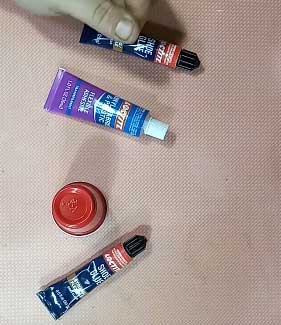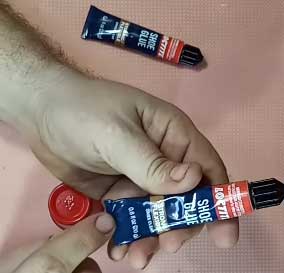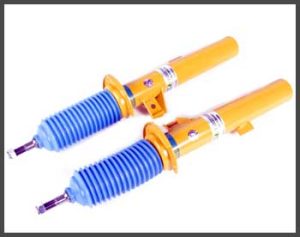If you’re dealing with broken shoes, I’ve got just the solution for you. Let me introduce you to Loctite Shoe Glue, a game-changer that will make you forget about running to the cobbler for every little repair.
This glue is the hero that saves your favorite pair of sneakers or those well-loved boots from heading to the bin. If you’re like me and hate parting with a trusty pair of shoes just because of a split sole, keep reading – Loctite Shoe Glue could be exactly what you’re looking for.
My Experience With Loctite Shoe Glue

When I first heard about Loctite Shoe Glue, I was skeptical.
Could a little bottle of glue actually bring my worn-out shoes back to life?
I mean, I’ve tried other adhesives before, and they either took forever to dry or just didn’t last.
But with Loctite, I was pleasantly surprised.
This shoe glue comes in a compact 0.6 fl oz bottle, and it’s designed with an easy-to-use applicator tip.
When I used it to repair a pair of old work boots – the kind I wear every day, rain or shine – I was amazed at how easy it was to apply.
The glue was tacky enough to hold the pieces together without any hassle, but it also didn’t make an impossible mess. And, importantly, it dries clear, leaving a barely noticeable mark that makes it great for those visible repairs.
Why Choose Loctite Shoe Glue?
- Permanent and Flexible Bond
The standout feature of Loctite Shoe Glue is its unique Flextec formula, which creates a durable, permanent bond. Flextec is designed specifically for repairs that need a lot of flexibility, which makes it perfect for shoes.
Unlike other glues, this one won’t turn rigid over time, which means the glued parts can keep moving with your foot’s natural movement without breaking or coming undone. It adheres well to a range of materials – rubber, leather, vinyl, and canvas, to name a few – making it incredibly versatile.
I tried it on a pair of sneakers where the rubber sole had started peeling off. I applied Loctite, held it together for a few minutes, and allowed it to cure for several hours. The result? A bond that felt just as strong as when I first bought the shoes.
- Water and Temperature Resistance
Another impressive thing about this glue is its resistance to different weather conditions. Loctite Shoe Glue can withstand temperatures from -58°F to 248°F, which makes it perfect for all seasons.
Whether you’re trudging through snow or dealing with scorching summer heat, this glue can handle it. I wore my repaired work boots through a few rainy days, and the glue showed no sign of weakening.
- Easy to Use
Ease of use is where Loctite really shines. With other glues, I often find myself getting more adhesive on my fingers than on the shoe itself – but Loctite’s precise applicator tip made it simple.
It’s also forgiving if you make a mistake; since it dries clear, it hides most errors. Even when I ended up with some extra glue showing, it blended into the fabric, and nobody could tell.
- Versatility
Loctite Shoe Glue isn’t just for shoes. I’ve used it on a few other projects around the house. From patching a tear in an old backpack to reinforcing a loose piece of foam padding, this glue has proven its worth.
The best part is that it’s also great for filling small gaps, which makes it especially useful for shoes that have odd-shaped wear and tear.
The Downsides: Cons of Loctite Shoe Glue
Of course, no product is perfect, and Loctite Shoe Glue has its downsides as well.
- Drying Time

The biggest downside I experienced was the drying time.
Loctite Shoe Glue takes several hours to fully cure, and although it sets fairly quickly, you really need to let it sit for at least 24 hours to get the best bond.
If you’re looking for a quick fix before you head out the door, this might not be the best option.
I’d recommend applying it and letting it cure overnight to make sure you’re getting the full strength of the adhesive.
- Limited Quantity
Another minor drawback is the bottle size. The 0.6 fl oz bottle may be enough for a few pairs of shoes, but if you’re planning multiple repairs or working with larger surfaces, you might find yourself needing more.
In my case, I was able to fix several pairs of shoes before running out, but it’s something to keep in mind if you have a big project.
- Sticky Application
Like many adhesives, Loctite can be very sticky, and it will glue your fingers together if you’re not careful. The first time I used it, I got some on my hand, and it took a bit of effort to get rid of it. So, make sure to wear gloves or be very precise during application.
Tips: Keeping Your Shoes In Great Condition

Using Loctite Shoe Glue to repair your shoes is just one step in extending their life. Here are some maintenance tips that have worked for me:
- Clean Shoes Before Application: Always make sure the surfaces you’re gluing are clean and dry. Any dirt, grease, or moisture can weaken the bond. I usually give my shoes a quick wipe-down with a damp cloth and let them dry completely before applying the glue.
- Clamp or Hold Firmly: After applying the glue, I make sure to hold the parts together for at least a few minutes before letting them sit. If possible, use clamps or even heavy books to keep pressure on the glued parts for an even stronger hold.
- Let it Cure Fully: As mentioned earlier, curing is key. I’ve learned that patience really pays off here. If you let the glue cure overnight or for 24 hours, the result will be much stronger and longer-lasting.
- Avoid Excessive Moisture: Even though Loctite Shoe Glue is water-resistant, it’s still best to avoid soaking the shoes excessively, especially within the first week after repair. While walking in the rain is fine, I’d avoid wearing your freshly glued shoes to a car wash or something equally extreme.
Comparing Loctite Shoe Glue With Other Brands
There are plenty of shoe adhesives on the market, so you might wonder how Loctite stacks up against the competition. Here’s a quick comparison based on my experiences:
- Gorilla Glue
Gorilla Glue is probably one of the first names that come to mind when you think of strong adhesives. It’s certainly powerful, but the issue I’ve run into with Gorilla Glue is its lack of flexibility.
Shoes require a bit of give, especially in high-stress areas like the sole. Gorilla Glue can turn brittle over time, causing it to crack and lose adhesion.
In comparison, Loctite Shoe Glue’s Flextec formula stays flexible, which is a big plus for keeping shoes comfortable and intact.
- Shoe Goo
Shoe Goo is another popular option for shoe repairs. It’s a heavy-duty adhesive and works well for patching and sealing. I’ve used Shoe Goo in the past, and while it’s definitely effective, it can be a bit more cumbersome to use. It’s thicker and messier, and it takes a longer time to cure than Loctite.
What I like about Loctite compared to Shoe Goo is the applicator. Loctite’s easy applicator tip makes precise repairs a breeze, whereas Shoe Goo tends to come out in big, goopy blobs that require a lot more effort to manage.
- Super Glue
Super Glue is convenient because it sets almost instantly, but that’s also its biggest downside when it comes to shoe repair. It can be too brittle for materials that flex a lot, like leather or rubber. I’ve used Super Glue for a quick fix on a sandal strap before, but it didn’t last more than a week.
Loctite Shoe Glue, on the other hand, gives a flexible bond that doesn’t crack under pressure, making it a better choice for footwear in my opinion.
Frequently Asked Questions (FAQ)
Yes, Loctite Shoe Glue definitely works. It creates a strong, flexible bond that’s perfect for a wide variety of shoe materials, including leather, rubber, and vinyl. From my personal experience, it has successfully fixed my work boots and sneakers and has held up under daily wear.
Loctite Shoe Glue is one of the strongest glues specifically designed for shoe repairs. Its Flextec formula allows for a permanent yet flexible bond that’s ideal for shoes, which require a certain amount of flexibility that regular glue can’t provide.
Loctite Shoe Glue sets in minutes but needs at least 24 hours to fully cure. For best results, I recommend leaving your repaired shoes undisturbed overnight to ensure the bond is as strong as possible.
Loctite Shoe Glue is the best option for repairing shoes. It’s designed specifically for flexible materials like rubber, leather, and fabric, and it provides a strong, durable bond that holds up well to the constant movement and stress that shoes experience.
Conclusion: Should You Buy Loctite Shoe Glue?
If you’re looking for a reliable, easy-to-use adhesive for shoe repairs, I absolutely recommend Loctite Shoe Glue. Its flexibility, water resistance, and versatility make it an excellent option for extending the life of your favorite shoes.
Just give it the time it needs to cure, and you’ll be surprised at how strong and long-lasting the bond can be.



